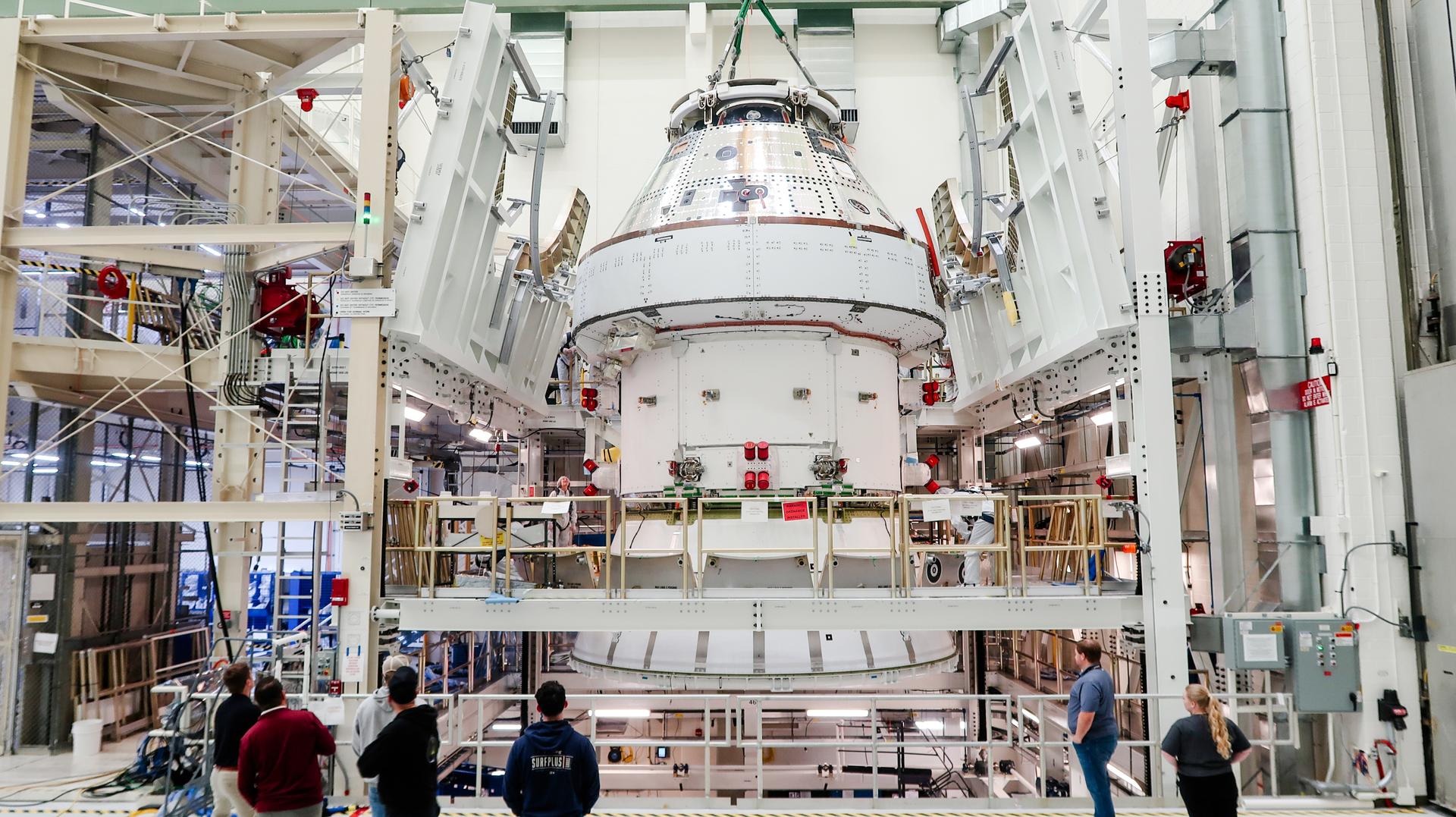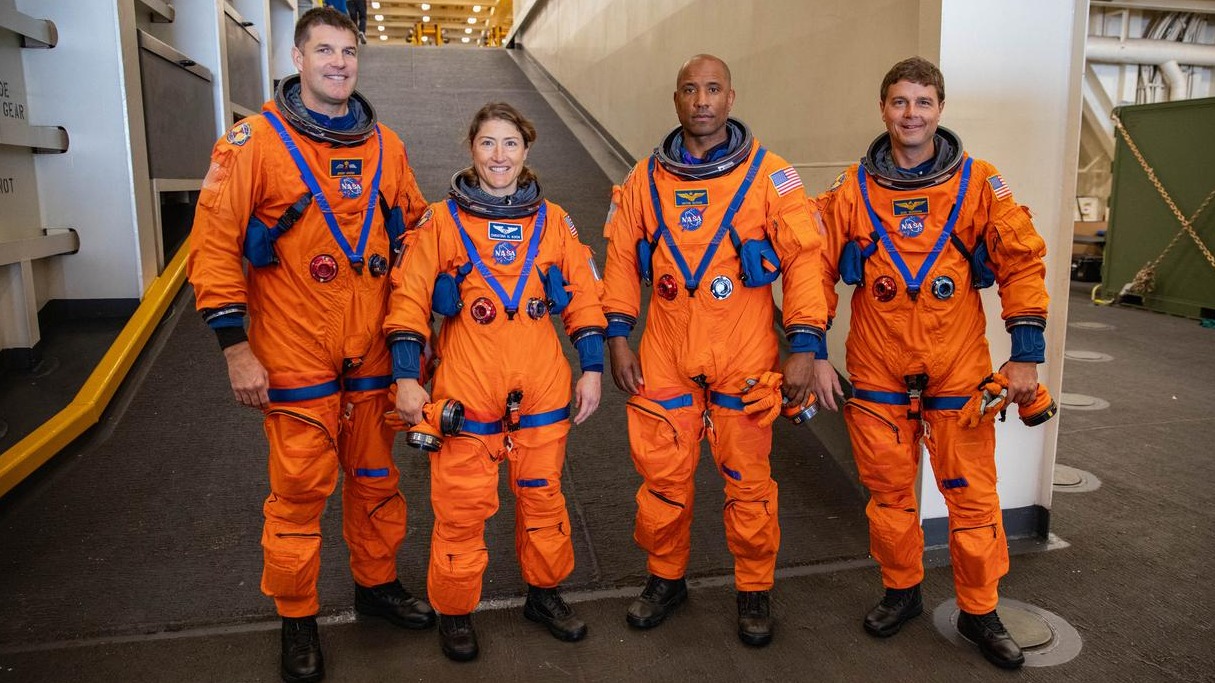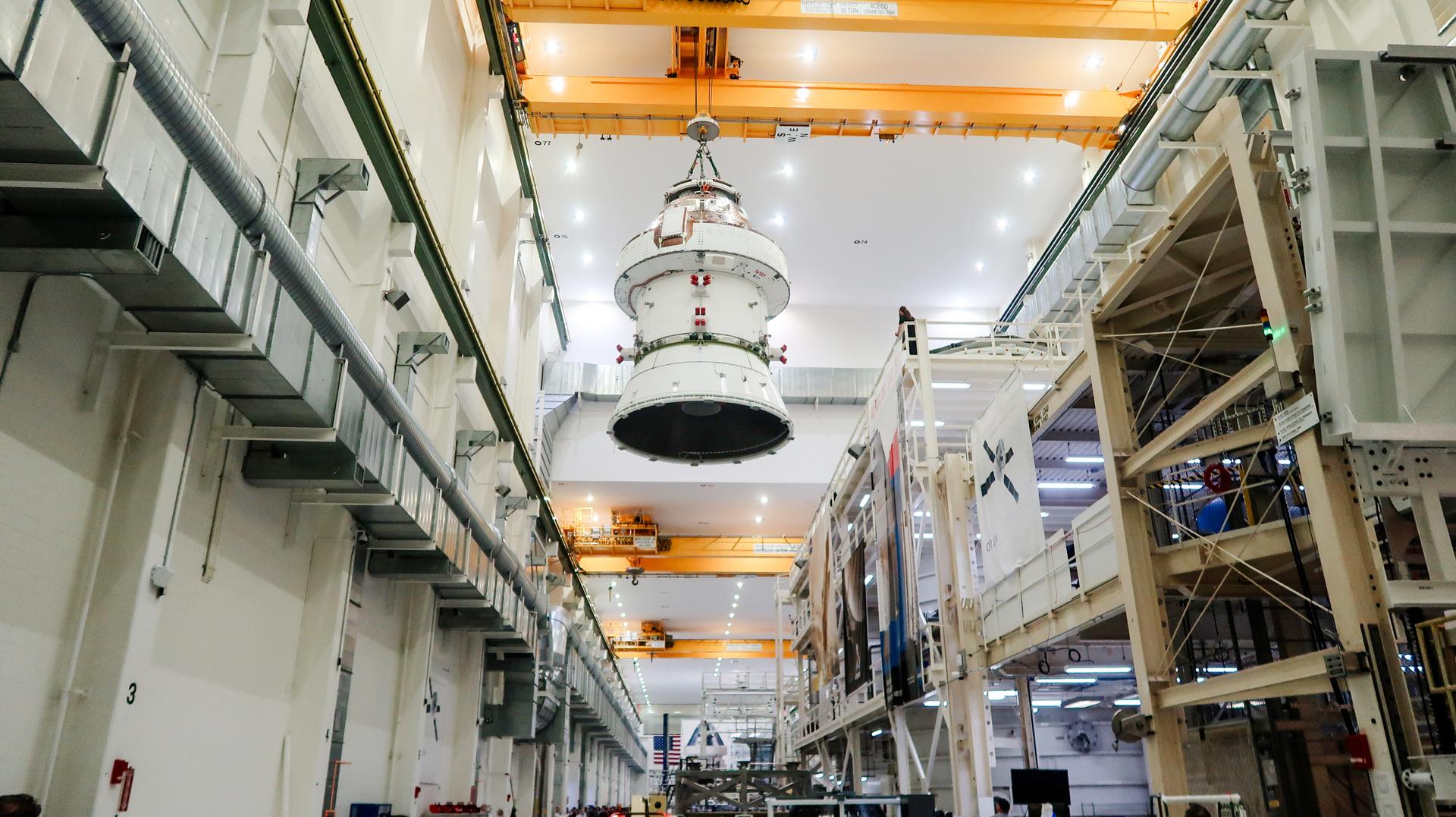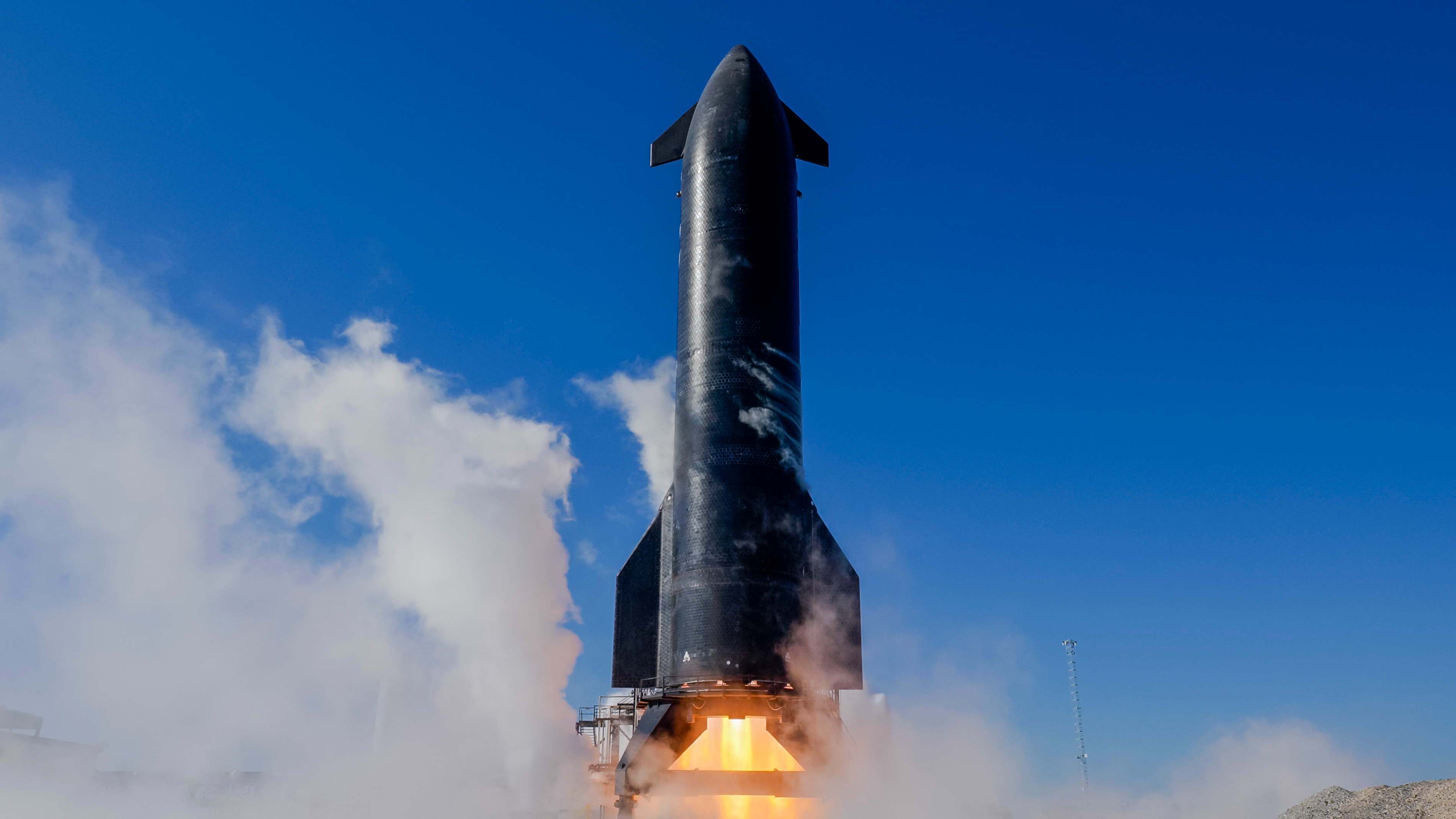Artemis 2 Orion spacecraft starts testing ahead of moon mission with astronauts in 2025 (video)
The spacecraft is in an altitude chamber that can test how it will perform in space.
NASA's next moon spacecraft for humans made one small leap into an altitude chamber for vital testing before it brings astronauts on board.
The Orion spacecraft for Artemis 2 is slated to fly around the moon with four astronauts no earlier than September 2025 — but first, engineers with NASA want to make sure it is ready for the job.
Testing in a vacuum chamber at NASA's Kennedy Space Center began Wednesday (April 10) to assess Orion for "electromagnetic interference and electromagnetic compatibility," NASA officials wrote in a statement. The aim is to make sure the spacecraft can continue working well amid these fields, both spacecraft-generated and space-generated, ahead of the big launch day.
Related: Astronauts won't walk on the moon until 2026 after NASA delays next 2 Artemis missions

The four Artemis 2 astronauts who will fly around the moon aboard Orion are NASA commander Reid Wiseman, NASA pilot Victor Glover (who will become the first Black person to leave low Earth orbit, or LEO), NASA mission specialist Christina Koch (the first woman to go beyond LEO) and Canadian Space Agency mission specialist Jeremy Hansen (the first non-American to achieve the feat).
Their spacecraft, now at KSC's Neil A. Armstrong Operations and Checkout Building, is inside a chamber with a lot of moon heritage. It was used to "test environmental and life support systems on the lunar and command modules during the Apollo program" that brought nine astronaut crews to the moon between 1968 and 1972, NASA officials wrote.

There are multiple altitude chambers available at KSC; Orion is in the west chamber, which was upgraded to "test the spacecraft in a vacuum environment that simulates an altitude of up to 250,000 feet (76.2 km)," NASA wrote.
Breaking space news, the latest updates on rocket launches, skywatching events and more!
Technicians hoisted Orion into that chamber on April 4 using a newly installed 30-ton crane in the building, which can move the stacked Orion crew and service modules into the chamber, manipulate the lid of the chamber and carefully transfer the spacecraft in the building's high bay.

While Orion spacecraft have flown to space twice before, this mission will be the first with astronauts on board. It will also test new systems, such as life support. (The spacecraft model's previous journeys were the Artemis 1 uncrewed mission to lunar orbit in late 2022 and a brief trip to Earth orbit in 2014.)
Artemis 2's Orion has more work in store after the altitude chamber. It will next be sent to another zone, called Final Assembly and Systems Testing, in the same KSC building. Then, more altitude testing will happen "to conduct a test that simulates as close as possible the conditions in the vacuum of deep space," NASA wrote. Those altitude tests could begin as soon as this summer.
Artemis 2 will kick off the larger crewed Artemis program, which plans to put boots on the moon again with Artemis 3 as soon as 2026. Both missions were delayed in January 2024 due to technical issues; Artemis 2 was pushed back about nine months while Artemis 3 is forecast to wait an extra year.
The NASA-led Artemis program is eventually slated to put a settlement at the moon's south pole, near water resources that exist there.
The Artemis Accords include 35 countries committing to peaceful space exploration norms led by NASA; a subset of those countries, including Canada, are providing hardware for moon missions. Japan, another signatory to Artemis, committed to a pressurized lunar rover for astronauts and will be the first country other than the United States to land an astronaut on the moon, NASA and Japan announced on Wednesday (April 10).
Join our Space Forums to keep talking space on the latest missions, night sky and more! And if you have a news tip, correction or comment, let us know at: community@space.com.

Elizabeth Howell (she/her), Ph.D., was a staff writer in the spaceflight channel between 2022 and 2024 specializing in Canadian space news. She was contributing writer for Space.com for 10 years from 2012 to 2024. Elizabeth's reporting includes multiple exclusives with the White House, leading world coverage about a lost-and-found space tomato on the International Space Station, witnessing five human spaceflight launches on two continents, flying parabolic, working inside a spacesuit, and participating in a simulated Mars mission. Her latest book, "Why Am I Taller?" (ECW Press, 2022) is co-written with astronaut Dave Williams.
